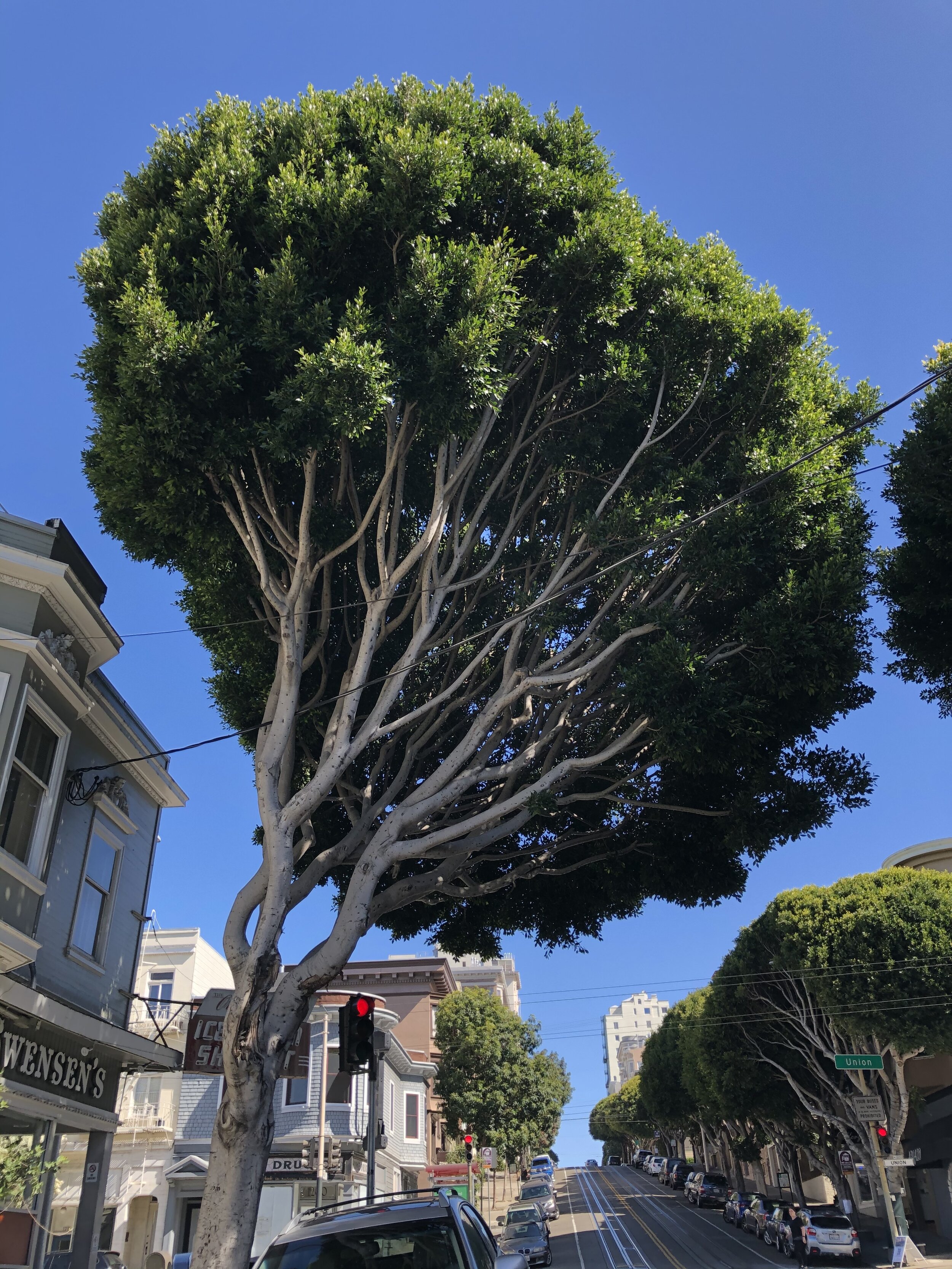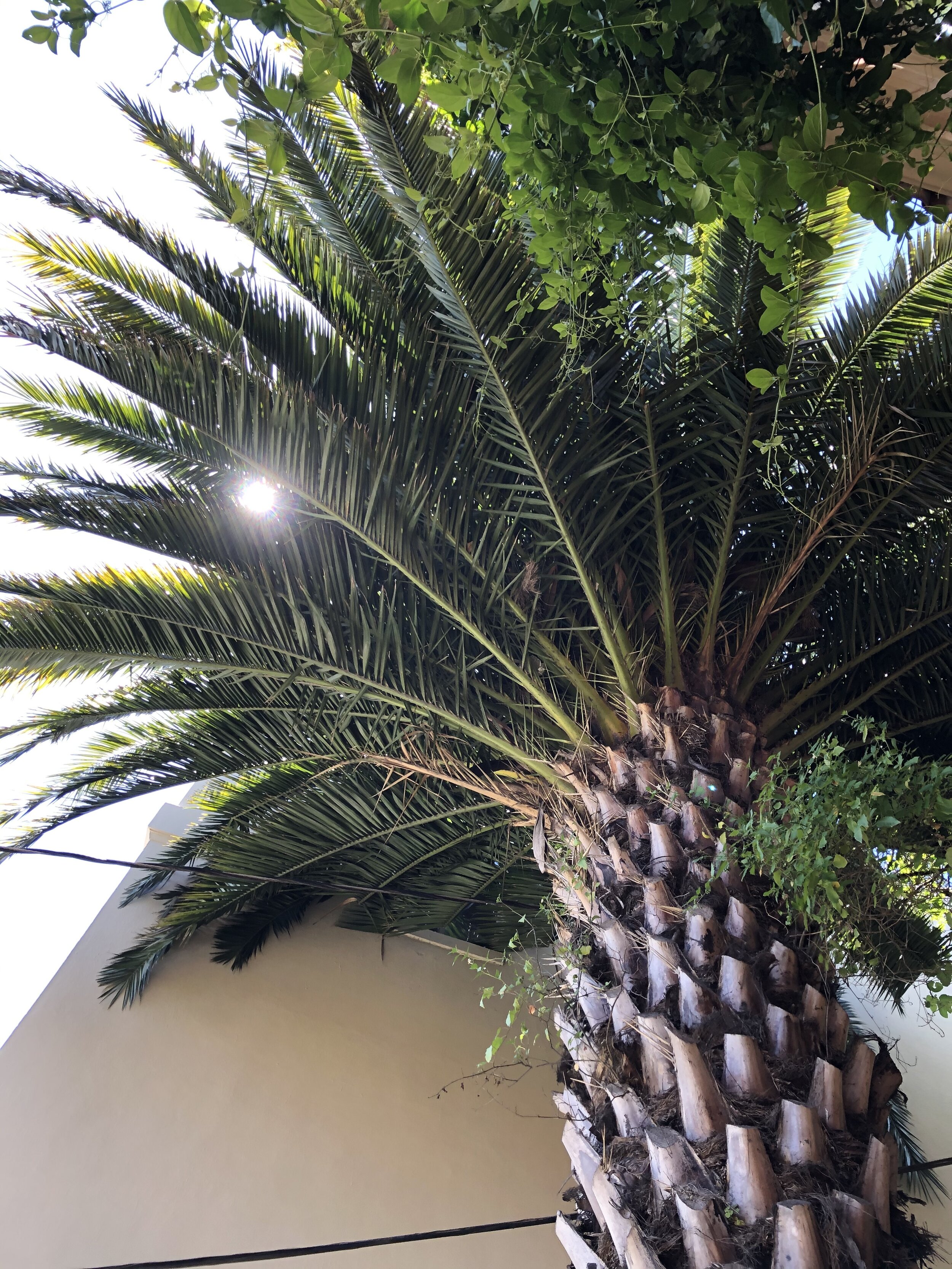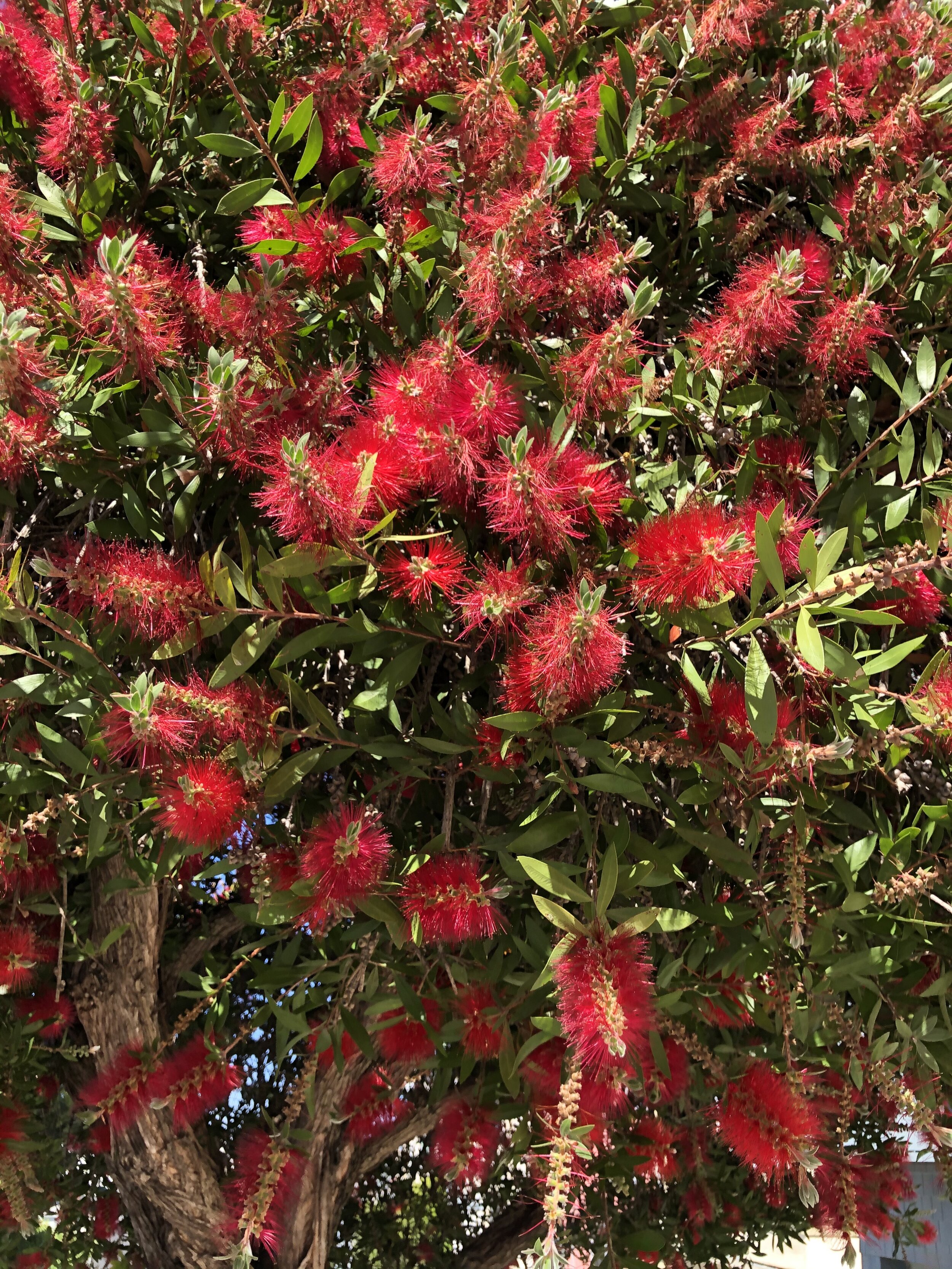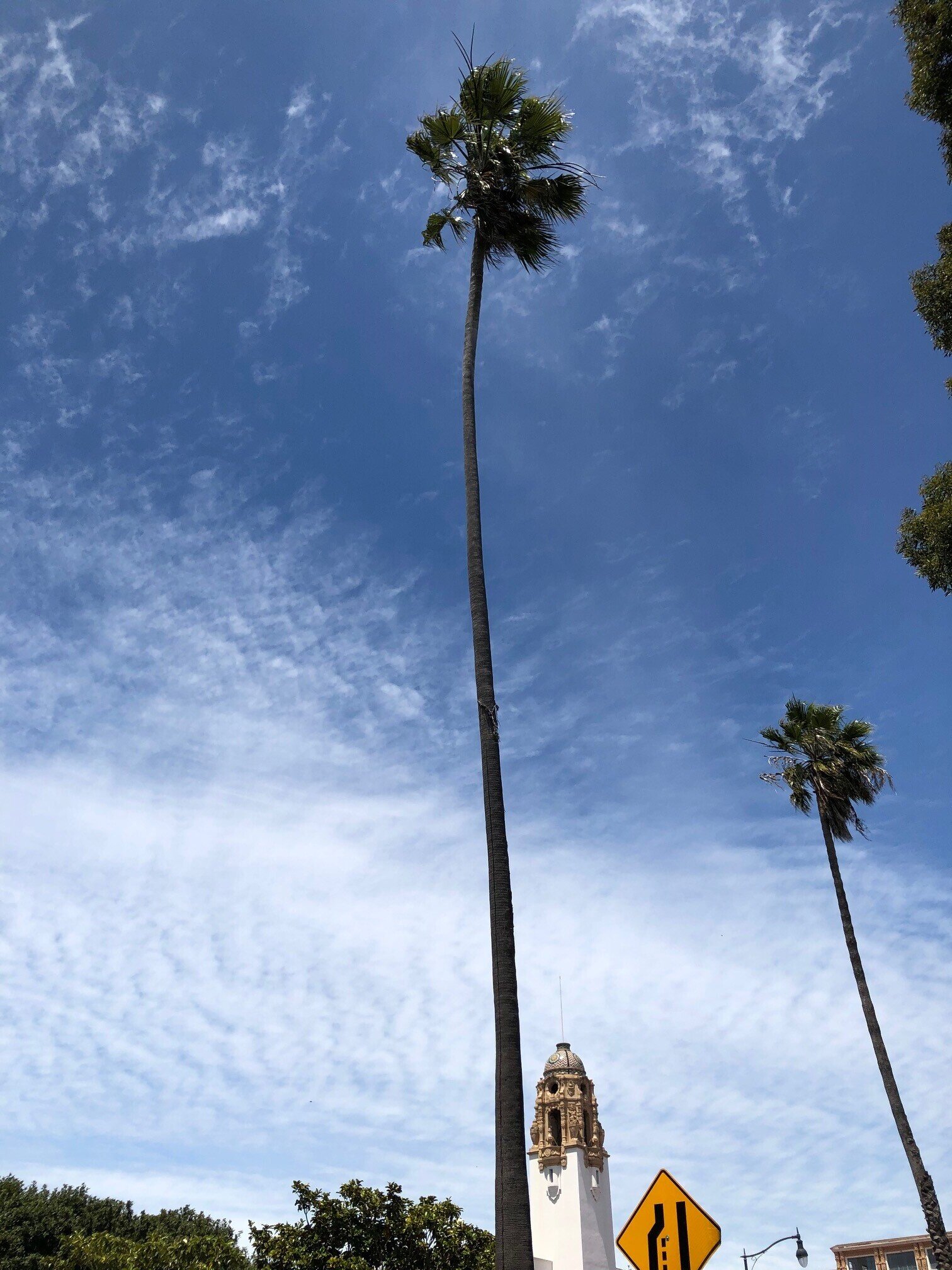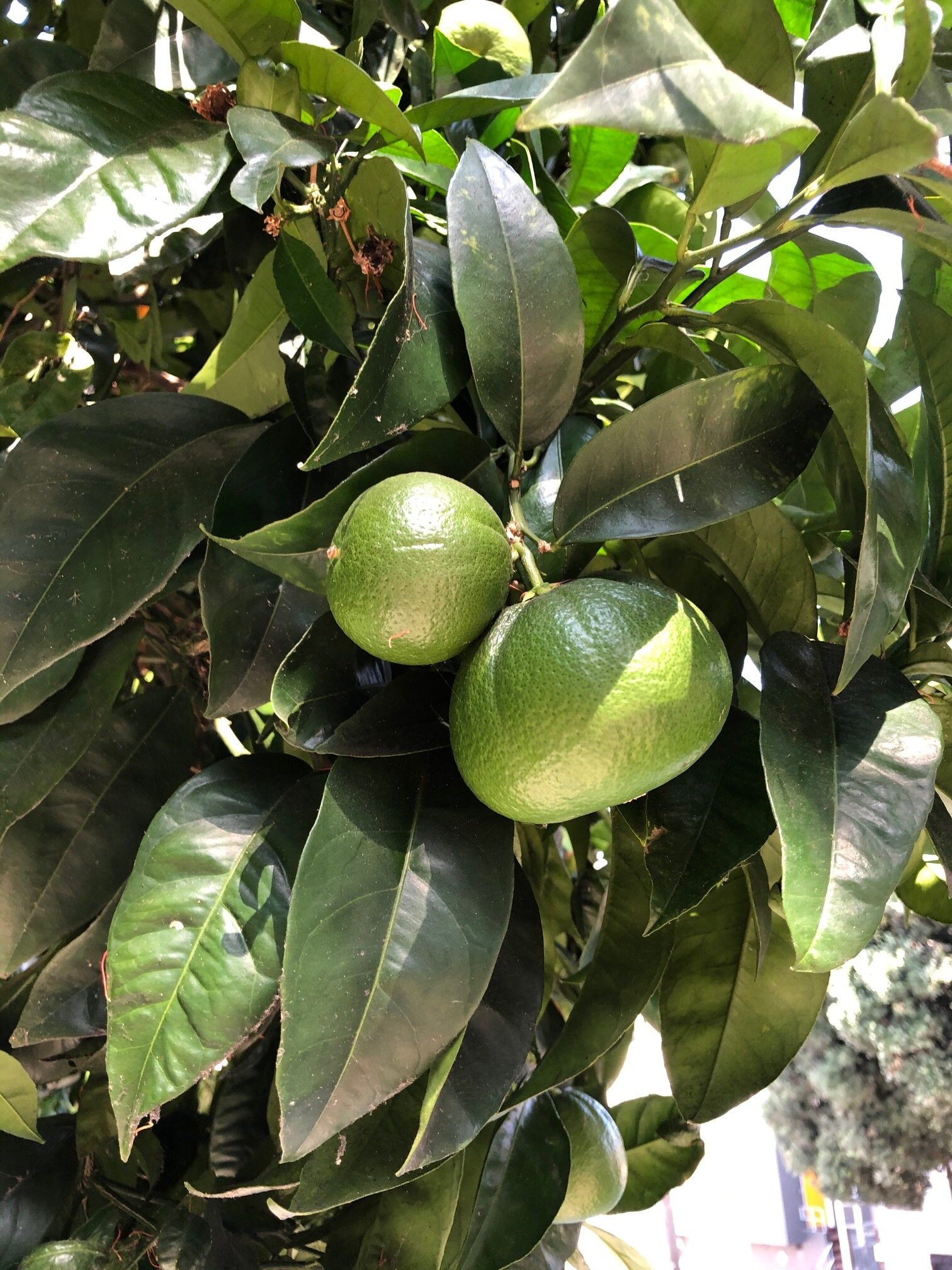Inner Sunset #covidtreetour (6-13-20)
This week’s tour is of the Inner Sunset, a neighborhood with many successful trees that have adapted to sandy soils, wind, and summer fog. The tour begins with a couple of New Zealand trees in front of um.ma, the Korean restaurant on 9th near Lincoln Way. (Tartine is next door.) Our group is the same: Jason Dewees (author of Designing with Palms), Richard Turner (retired editor of Pacific Horticulture), and I’m Mike Sullivan, author of Trees of San Francisco.
The walk heads south on 9th Avenue to Irving Street, then west to 10th Avenue, north on 10th to Lincoln Way, west on Lincoln to 11th Avenue, south on 11th to Kirkham Street, east on Kirkham almost to 7th Avenue, then north on 8th Avenue to Lincoln Way, and west on Lincoln to 9th Avenue, ending in front of Pacific Catch at the corner of Lincoln and 9th, just a few doors north of the beginning of the tour.
Numbered trees are labeled with common and scientific names and country of origin, all written in white chalk on the sidewalk; accompanying numbers, in blue, run from 1 to 59. White arrows on the pavement provide directions whenever a turn is needed.
A karaka (Corynocarpus laevigatus) from New Zealand on 9th Avenue - the only one we know of in San Francisco!
9th Avenue, Lincoln to Irving, east side
1. 1220 - 9th Karaka (Corynocarpus laevigatus), New Zealand
2. 1220 - 9th Kermadec pōhutukawa (Metrosideros kermadecensis), Raoul Island, New Zealand
3. 1248 - 9th Glossy privet (Ligustrum lucidum), S China
4. 1262 - 9th Kwanzan flowering cherry (Prunus serrulata ‘Kwanzan’), E Asia (2 trees)
5. 1266 - 9th Italian buckthorn (Rhamnus alaternus), Mediterranean Basin (3 trees)
Irving Street, 9th to 10th avenues, north side
6. 834 Irving Coppertone Indian hawthorne (Raphiolepis ‘Coppertone’), hybrid of E Asian species (new spring growth is coppery in color)
7. 836 Irving Ficus (Ficus microcarpa ‘Nitida’), S Asia (common street tree in SF)
10th Avenue, Irving to Lincoln Way, west side
Fern-leaf Catalina ironwood (Lyonothamnus floribundus ssp. asplenifolius)
8. 1275 - 10th Purple-leaf plum (Prunus cerasifera), Eurasia (note the green-leafed sprouts from the root stock)
9. 1245 - 10th Fern-leaf Catalina ironwood (Lyonothamnus floribundus ssp. asplenifolius), CA’s Channel Islands, except Catalina; CA native (a particularly fine specimen)
10. 1219 - 10th Water gum (Tristaniopsis laurina), E Australia (grows in streamside locations in the wild; hence, the common name)
11. 1215 - 10th Red-flowering gum (Corymbia ficifolia), SW Australia (one of SF’s iconic trees, yet occurs in a tiny area in the wild)
12. 1205 - 10th Silver dollar gum (Eucalyptus polyanthemos), SE Australia; the juvenile foliage looks like a silver dollar.
Turn left, and head west on the south side of Lincoln Way.
Ginko (Ginkgo biloba) leaves
Within Golden Gate Park on the north side of Lincoln Way, 10th to 11th avenues
13. 909 Lincoln Saramati palm (Trachycarpus ukhrulensis), Himalayas; very rare in cultivation (across the street, inside SF Botanical Garden)
14. Lincoln at 11th Monterey cypress (Hesperocyparis macrocarpa), Carmel, CA native (seen on the north side of Lincoln, all the way to the beach; one of the trees that helped turn the shifting sand dunes into the Golden Gate Park of today)
11th Avenue, Lincoln to Irving, west side
15. 1227 - 11th Ginkgo (Ginkgo biloba), China
16. 1245 - 11th Mayten (Maytenus boaria), Chile
Cross 11th to the east side.
17. 1288 - 11th Monkey-hand tree (Chiranthodendron pentadactylon), S Mexico and Guatemala (tree is near the corner of Irving Street; note the curious flowers, which look like a monkey’s outstretched hand)
11th Avenue, Irving to Judah, east side
18. 1300 - 11th Primrose tree (Lagunaria patersonii), Australia & S Pacific Islands
19. 1319 - 11th Prickly paperbark (Melaleuca styphelioides), E Australia (across the street)
20. 1324 - 11th Bronze loquat (Raphiolepis deflexa, syn. Eriobotrya deflexa), E Asia
11th Avenue, Judah to Kirkham, west side
21. 1403 - 11th Trident maple (Acer buergerianum), E Asia
**This is a long block with numerous repeats of trees already seen on this walk.
22. 1495 - 11th Hercules tree aloe (Aloidendron, syn. Aloe, x ‘Hercules’), hybrid of S African species (tree is in the planter, around the corner on Kirkham)
Kirkham Street, 11th to 10th, north side
Australian tree fern (Cyathea cooperi)
23. 628 Kirkham Blackwood acacia (Acacia melanoxylon), SE Australia (also across the street)
24. 614 Kirkham Victorian box (Pittosporum undulatum) E Australia
**Note the beautifully planted succulent garden at 608 Kirkham.
25. 600 Kirkham Olive (Olea europaea), Mediterranean Basin (2 trees are on 10th)
Cross Kirkham to the south side and continue east.
Kirkham Street, 9th to 8th, south side
26. 433 Kirkham Australian tree fern (Cyathea cooperi), NE Australia
27. 415 Kirkham Peppermint willow (Agonis flexuosa), SW Australia
Kirkham Street, 8th to 7th, north side
You find random things on tree tours - someone was a pretty good Peanuts artist on this tree!
28. 350 Kirkham Cabbage tree (Cordyline ‘Atropurpurea’), hybrid of New Zealand species (the spiky plants with sword-shaped leaves)
IItalian cypress (Cupressus sempervivens ‘Glauca’), E Mediterranean (the candle-shaped conifer)
29. 326 Kirkham Sweet michelia (Magnolia doltsopa), Himalayas
Return to 8th and head north.
8th Avenue, Kirkham to Judah, east side
30. 350 Kirkham Lemon bottlebrush (Callistemon citrinus), E Australia (3 trees are on 8th)
Monterey pine (Pinus radiata), Año Nuevo, Monterey, Cambria, CA native; most widely planted coniferous tree in the world, mostly for lumber (trees are across the street in the rear garden)
31. 1478 - 8th Little-leaf linden (Tilia cordata), Eurasia
32. 1452 - 8th Jade tree (Crassula ovata), S Africa (“tree” might be a bit of a stretch)
33. 1446 - 8th Southern magnolia (Magnolia grandiflora), SE USA
34. 1426 - 8th Evergreen pear (Pyrus kawakamii), Taiwan and China
8th Avenue, Judah to Irving, east side
35. 1390 - 8th New Zealand Christmas tree, pōhutukawa (Metrosideros excelsa), New Zealand
spotted gum (Corymbia maculata),
36. 1362 - 8th Spotted gum (Corymbia maculata), E Australia (an undeservedly rare tree, well adapted to the western half of SF)
37. 1331 - 8th Sweetshade (Hymenosporum flavum), E Australia (across the street)
38. 1330 - 8th Strawberry tree (Arbutus unedo) SW Europe to Ireland
8th Avenue, Irving to Lincoln Way, east side
38. 700 Irving Red ironbark (Eucalyptus sideroxylon), E & SE Australia (tree is on 8th, across the street)
39. 1282 - 8th Mirror plant (Coprosma repens), New Zealand
40. 1274 - 8th London plane tree (Platanus x acerifolia), hybrid of E USA species and European species
red-flowering gum (Corymbia ficifolia) flower and leaves
41. 1260 - 8th Red-flowering gum (Corymbia ficifolia), SW Australia (a favorite in the neighborhood)
42. 1238 - 8th Sydney golden wattle (Acacia longifolia), E Australia
43. 1232 - 8th Ceanothus (Ceanothus sp.), a CA native, not commonly grown as a street tree in SF
44. 1222 - 8th Washington thorn (Crataegus phaenopyrum) E USA
Lincoln Way at 9th Avenue, south side
45. 1200 - 9th Ribbon gum (Eucalyptus viminalis), S & E Australia (tree is across the street in Golden Gate Park; its bark peels off in ribbons)
This walking tour was organized by Mike Sullivan, author of The Trees of San Francisco (if you like this tour, there are 12 more neighborhood tree tours in Mike’s book), Jason Dewees, horticulturist at Flora Grubb Gardens and author of Designing with Palms; and Richard Turner, retired editor of Pacific Horticulture magazine and editor of Trees of Golden Gate Park. If you’re a tree enthusiast, buy all three books! You can follow Mike (@sftreeguy) and Jason (@loulufan) on Instagram.
































